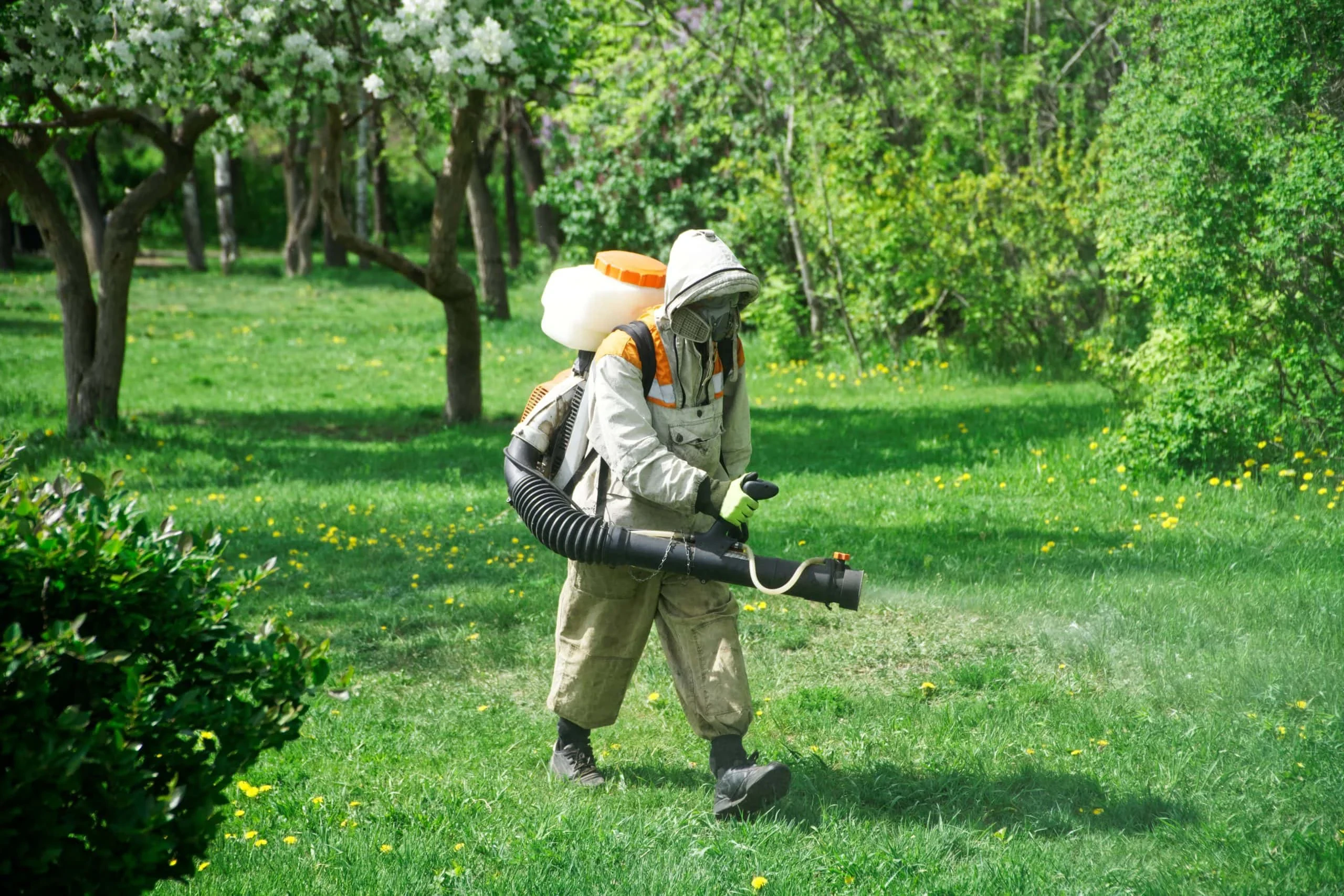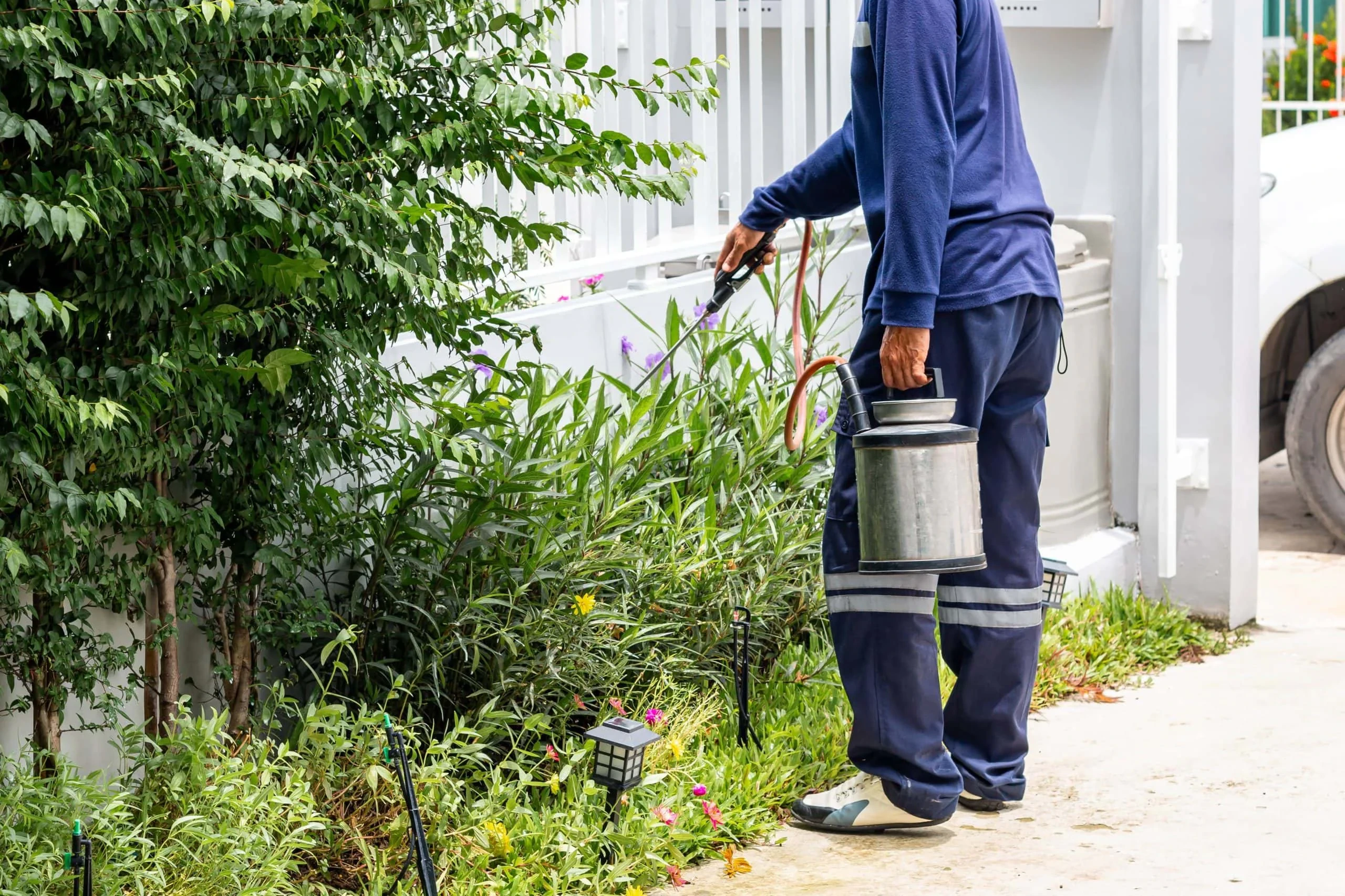Explore proven eco-friendly pest control methods that protect your home and environment without compromising effectiveness in 2025.
Share:

Summary:
The pest control industry has evolved dramatically. What used to be a choice between “natural but weak” or “chemical but effective” no longer exists.
Growing environmental consciousness is driving demand for eco-friendly pest control methods that minimize chemical use and environmental impact. More importantly, these methods now deliver results that often surpass traditional approaches.
While natural pest control methods may not be as fast-acting, they can be every bit as effective as synthetic controls over time. The key difference? They solve problems at the source instead of just treating symptoms.

Integrated Pest Management (IPM) is defined as “an ecosystem-based strategy that focuses on long term prevention of pests and their damage through a combination of techniques such as biological control, habitat manipulation, modification of cultural practices, and use of resistant varieties”.
Think of IPM as a comprehensive game plan rather than a single solution. Instead of reaching for the strongest chemical available, you start with the least invasive methods and escalate only when necessary.
IPM combines biological and mechanical methods to manage pest populations as a holistic approach that uses pesticides as a last resort, with the goal not to eradicate pests completely but to reduce them to manageable levels.
This approach works because it addresses why pests are attracted to your property in the first place. Creating the most hospitable growing environment for your plants is the first step in controlling pests – a healthy garden is the single best natural pest control there is, as healthy plants are less attractive to pests and better equipped to defend themselves.
For homeowners in Swartz Creek, MI, this means examining your property’s unique conditions. Michigan’s climate creates specific challenges with moisture, seasonal pest cycles, and diverse wildlife. An IPM approach considers these local factors to create targeted solutions.
The beauty of IPM lies in its adaptability. Your pest control program evolves with the seasons, your property’s changes, and emerging pest pressures. Rather than applying the same treatment repeatedly, you’re implementing a dynamic strategy that stays ahead of problems.
Biological control focuses on introducing predators into the environment to naturally reduce pest populations – for instance, ladybugs can be added as a biological pest control method to combat aphids, with benefits including that non-target species and beneficial insects are not harmed.
The science behind biological controls is fascinating. Instead of fighting nature, you’re working with it. Examples include ladybugs and lacewings effective against aphids, nematodes targeting soil-dwelling pests like grubs and root maggots, and Bacillus thuringiensis (Bt) – a naturally occurring bacterium used to control caterpillars, mosquitoes, and beetles.
Essential oils have proven remarkably effective against specific pests. A mix of equal parts peppermint, thyme, and rosemary essential oil in a spray bottle filled with water repels flies, fleas, mosquitoes, cabbage looper caterpillars, aphids, squash bugs, white flies, ants, beetles, spiders, chiggers, ticks, and roaches.
Microbial insecticides are microorganisms that target pests in an eco-friendly way, with Bacillus thuringiensis (Bt) being one of the most common – it’s non-toxic for humans and pets, but requires proper application with protective equipment.
Physical barriers and mechanical controls offer immediate, chemical-free protection. Mechanical methods include barriers, fences, traps, and manual removal strategies that work proactively to keep pests out, and when infestation occurs, can safely and humanely relocate pests while avoiding pesticide use altogether.
For Michigan homeowners, timing matters significantly. Climate change has led to birds returning from migration sooner, shorter hibernation periods, and increased reproduction among animals already abundant in Michigan like squirrels, chipmunks, opossums, rats, mice, voles, and raccoons. This means your biological control timing needs to account for these shifting patterns.
The key to success with biological controls is patience and consistency. The key is repetition with many natural insect repellents – these eco-friendly solutions are safe, easy, and effective for keeping ants out of your home and yard. Results build over time as beneficial populations establish and pest populations decline naturally.
Want live answers?
Connect with a First Choice Pest Control expert for fast, friendly support.
Natural pesticides are derived from plants, such as neem oil, pyrethrum, and diatomaceous earth. These aren’t just “gentler” alternatives—they’re often more targeted and effective than broad-spectrum chemicals.
Diatomaceous earth (DE) can be sprinkled around baseboards or wherever insects are found to remove unwanted pests quickly, helping get rid of caterpillars, aphids, slugs, whiteflies, snails, thrips, and root maggots – though it’s best not to inhale it.
Neem oil deserves special attention. To prepare neem oil for use, mix 2 teaspoons with 1 quart of water (optionally with 1 teaspoon mild liquid soap), and spray early in the morning or evening to avoid burning foliage when combined with sun and oil.

Your garden can become your first line of defense against pests. By strategically placing certain plants next to one another, you can produce a defensive shield from unwanted critters – marigolds are known for their ability to keep away nematodes and aphids while promoting healthy growth among plants.
Essential oils work through multiple mechanisms. Peppermint, lavender and eucalyptus are all effective insect repellents that can be mixed with water in a spray bottle for an environmentally-friendly alternative to chemical pesticides, working by masking your environment with their powerful aroma that insects cannot stand.
Specific applications include peppermint oil for spiders and ants (diluted with water and sprayed around entry points), vinegar mixed with water to repel ants and other insects in prevalent areas, and citrus peels near entryways or in cabinets to repel spiders and ants.
The science behind these natural repellents is solid. Some types of firewood like cedar and hickory naturally repel mosquitoes and other bugs while burning, and citronella oils mixed in natural candles can help deter mosquitoes and flying insects outdoors.
For Michigan’s specific pest challenges, timing and application matter. There is wildlife present all year giving them ample opportunities to destroy property, with some seasons making it more challenging to properly deal with nuisance wildlife due to weather, mating, maternity, and local and state regulations.
Consider your property’s microclimate when applying plant-based solutions. Areas with more moisture, shade, or organic matter may require different approaches or more frequent applications. The goal is creating an environment that’s naturally inhospitable to pests while remaining comfortable for your family.
Heat treatment represents one of the most effective eco-friendly pest control methods available today. Heat treatments raise temperature throughout your home to 113°F or higher and maintain those lethal levels for at least 90 minutes, ensuring elimination of pests at every life stage including eggs, with no waiting period like chemical treatments that require multiple visits.
Heat treatment is completely safe for your family and pets with no toxic chemicals or residues left behind – it’s actually safer than chemical treatments that require you to vacate your home for extended periods, and most belongings can stay in place during treatment.
Physical exclusion methods provide immediate, long-term protection. Physical barriers such as screens, nets, and caulking can effectively prevent pests from entering homes and gardens, particularly useful for keeping out rodents and insects without the need for chemical treatments.
Implementing physical barriers includes installing door sweeps and screens to seal gaps, using sticky traps with non-toxic adhesive for crawling insects like cockroaches or silverfish, and installing light traps to attract flying insects like mosquitoes and moths.
The effectiveness of physical exclusion depends on thoroughness and maintenance. If your home has cracks or holes, you have an open invitation for pests to come in – remove any standing water and seal any gaps in your floors, walls, and foundation.
For Swartz Creek homeowners, seasonal maintenance becomes crucial. Michigan’s freeze-thaw cycles can create new gaps and entry points throughout the year. Regular inspection and sealing of potential entry points, especially before seasonal pest activity peaks, provides the foundation for any eco-friendly pest control program.
Professional heat treatments offer advantages beyond just effectiveness. Most heat treatments take 6-8 hours to complete depending on home size and severity of infestation, and can typically be finished in a single day. This efficiency, combined with safety and effectiveness, makes heat treatment an increasingly popular choice for serious infestations.
The most effective eco-friendly pest control strategy combines multiple approaches tailored to your specific situation. Integrated Pest Management (IPM) is a comprehensive approach that combines multiple eco-friendly techniques to manage pest populations effectively, focusing on prevention, monitoring, and control using natural and mechanical methods.
Success starts with understanding your property’s unique challenges and pest pressures. Proper identification of your pest is critical to effective management, as certain control methods will only work on certain pests.
The future of pest control is moving toward these sustainable methods. The future of pest control is becoming increasingly data-driven and focused on sustainability, with technicians likely to adopt AI and machine learning to analyze pest behavior, infestation patterns, and environmental factors more accurately.
When you’re ready to implement eco-friendly pest control, consider working with professionals who understand these methods. We at First Choice Pest Control have been helping Swartz Creek families protect their homes with safe, effective solutions that put your family’s health and environmental responsibility first.
Article details:
Share: